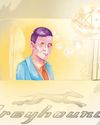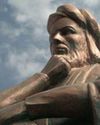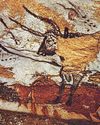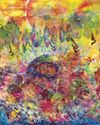
Leonardo da Vinci died five hundred years ago last year, and galleries all over the world commemorated this quincentenary. However, it was only long after his death – after the re-discovery of his collection of notebooks – that other academic fields could legitimately start to claim Leonardo as one of their own. So, what does this polymath, Renaissance man, genius, have to add to the study of philosophy?
Well, surely if being a philosopher is anything, it is using enquiry to test claims and hypotheses from first principles, including using experiments to discern whether or not truth can be reached from them. Indeed, as Ludwig Wittgenstein stated, “Philosophy is not a body of doctrine but an activity” (Tractatus Logico-Philosophicus, 1923) – in which case we might have plenty to learn, not from a systematic exposition of a doctrine or the expounding of a theory, but from Leonardo’s life, his methods, and his spirit. From the select highlights of his life and work in this brief summary, I think anyone who holds even a fraction of Leonardo’s restlessness or curiosity can find something within his vast field of enquiry to deepen their own understanding.
Leonardo Observes Life
Bu hikaye Philosophy Now dergisinin April/May 2020 sayısından alınmıştır.
Start your 7-day Magzter GOLD free trial to access thousands of curated premium stories, and 9,000+ magazines and newspapers.
Already a subscriber ? Giriş Yap
Bu hikaye Philosophy Now dergisinin April/May 2020 sayısından alınmıştır.
Start your 7-day Magzter GOLD free trial to access thousands of curated premium stories, and 9,000+ magazines and newspapers.
Already a subscriber? Giriş Yap

Metaphors & Creativity
Ignacio Gonzalez-Martinez has a flash of inspiration about the role metaphors play in creative thought.

Medieval Islam & the Nature of God
Musa Mumtaz meditates on two maverick medieval Muslim metaphysicians.

Robert Stern
talks with AmirAli Maleki about philosophy in general, and Kant and Hegel in particular.

Volney (1757-1820)
John P. Irish travels the path of a revolutionary mind.

IT'S A WONDERFUL LIFE
Becky Lee Meadows considers questions of guilt, innocence, and despair in this classic Christmas movie.

"I refute it thus"
Raymond Tallis kicks immaterialism into touch.

Cave Girl Principles
Larry Chan takes us back to the dawn of thought.

A God of Limited Power
Philip Goff grasps hold of the problem of evil and comes up with a novel solution.

A Critique of Pure Atheism
Andrew Likoudis questions the basis of some popular atheist arguments.

Exploring Atheism
Amrit Pathak gives us a run-down of the foundations of modern atheism.